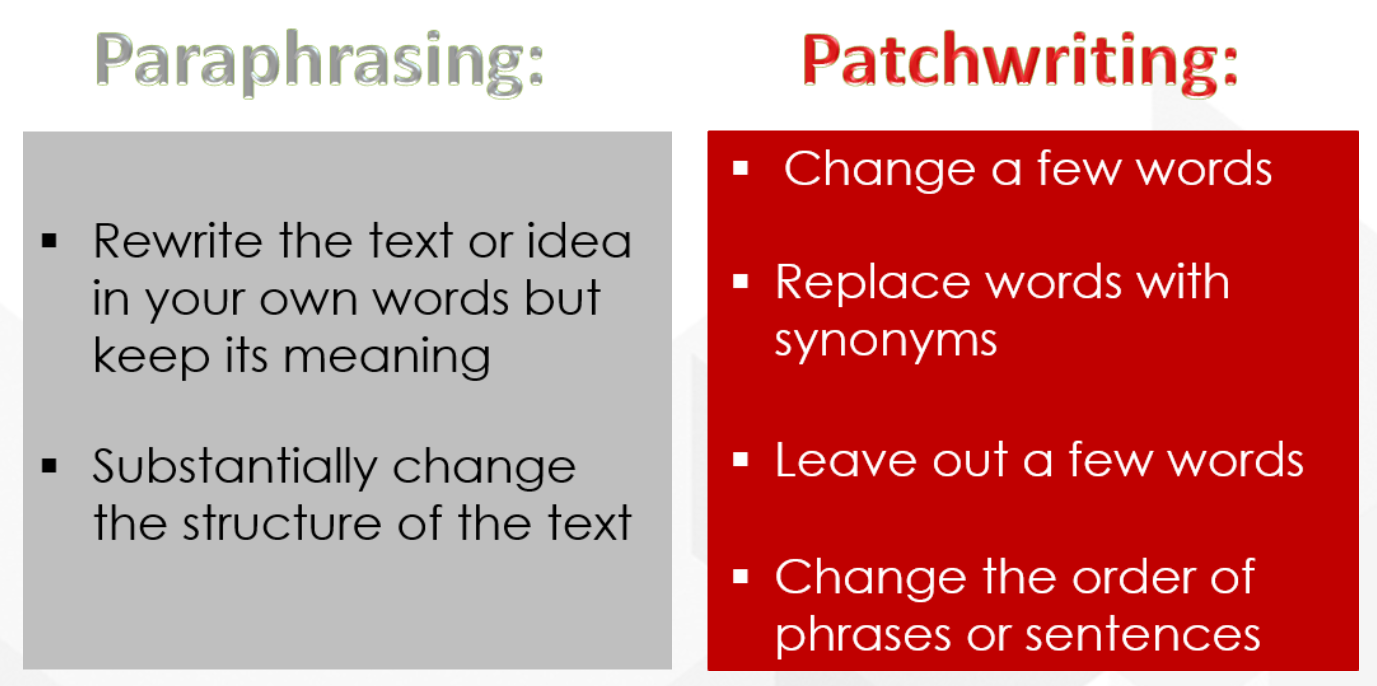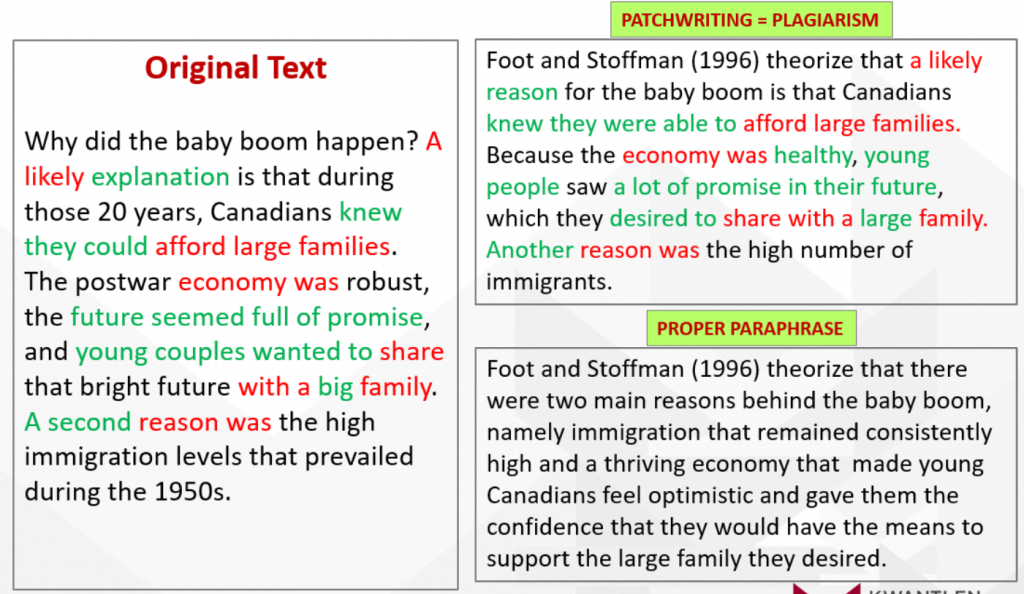30 Paraphrasing vs Patchwriting
Paraphrasing
Paraphrasing means to rewrite someone else’s idea in your own words without changing the original meaning while changing the structure of the original. A paraphrase is about the same length as the original.
Patchwriting
In patchwriting a writer attempts to paraphrase, but ultimately imitates the sentence structure or vocabulary of the source (Howard, 1993, p. 233). Patchwriting is a common mistake, but it is NOT an accepted form of writing in academia and is considered a form of plagiarism, even if you cite your source.
Difference between paraphrasing and patchwriting

Paraphrasing vs patchwriting: Example
Have a look at the original text on the left and compare it to the two restatements on the right. As you can see, in the first example the writer uses several exact phrases of the original (shown in red) and several synonyms or phrases that are very close to the original (shown in green). In addition, much of the structure of the paragraph is the same. This is an example of patchwriting, and despite a proper citation being included, an instance of plagiarism.
In the second example, the writer uses their own voice to express the idea of the original text. Besides a few individual words that would be difficult to replace, such as “baby boom” and “Canadians”, the original has been entirely rewritten and the structure has been changed significantly. This is an example of proper paraphrasing.

Source: (Foot & Stoffman, 1996, p. 20)
 |
|

